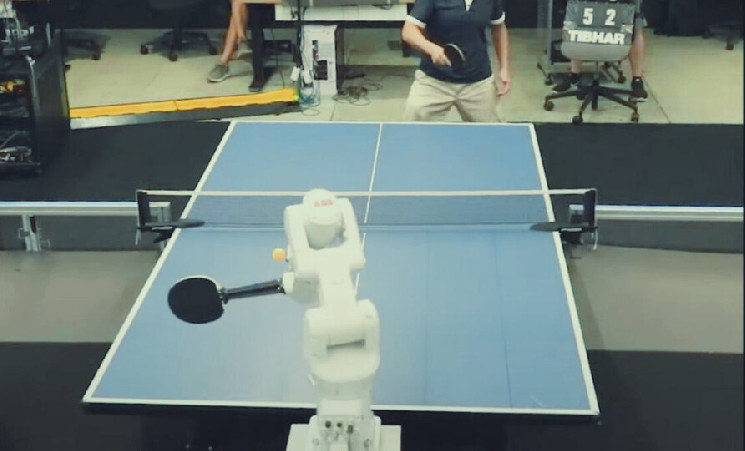Google’s DeepMind Robotics team has unveiled a significant advancement in robotics with their newly developed table tennis robot. In the paper they recently published titled “Achieving Human-Level Competitive Robot Table Tennis,” the robot is shown to be playing at a high level that is comparable to amateur human players.
This is quite significant in the field of robotics, especially in sports, where quick thinking and quick action are vital.
“This is the first robot agent capable of playing a sport with humans at the human level and represents a milestone in robot learning and control. However, it is also only a small step towards a long-standing goal in robotics of achieving human-level performance on many useful real-world skills.”
the research paper
Study Reveals Robot’s Strengths and Limitations in Table Tennis
It proved to be higher than the performance of beginners and only lost 45% of the time to intermediate players. Nevertheless, with more experienced opponents, the robot was not able to win a single match. In general, the robot claimed victory in 45 percent of the 29 matches that were held. This performance shows some constraints and future opportunities of this approach.
Meet our AI-powered robot that’s ready to play table tennis. 🤖🏓
— Google DeepMind (@GoogleDeepMind) August 8, 2024
It’s the first agent to achieve amateur human level performance in this sport. Here’s how it works. 🧵 pic.twitter.com/AxwbRQwYiB
Even though the robot has achieved great milestones, it encountered various hurdles. Its main problem is the response to the fastballs, which can be explained by the system latency, the necessity of the mandatory resets between the shots, and the lack of data. The authors of this study at DeepMind also note these limitations and recommend ways to enhance the robot’s capability.
For latency, the team suggests investigating improved control algorithms as well as hardware improvements. Possible enhancements include creating more accurate models for ball movement and enhancing the communication of the robot’s sensors and actuators.
These changes are intended to increase the reaction speed of the robot as well as the general performance. Also, the robot has problems with high and low balls, backhand, and understanding ball spin.
The results of the research conducted by DeepMind are not limited to the table tennis application. The principles used in the development of this robot may be used in enhancing other sectors in the future. The team focuses on policy architecture, the use of simulation, and real-time strategy adjustment in robotics.
Table Tennis Emerges as Popular Testing Ground for Robotics
Table tennis is one of the most popular arenas in robotics due to the requirements for accuracy, planning, and speed. Google DeepMind’s robot is among the other famous robotic systems for playing table tennis.
In 2017, OMRON, a Japanese electronics company, introduced FORPHEUS, a “robot table tennis tutor” that was considered the first of its kind in the world. This robot, Orpheus, named after the Greek mythological figure, became a Guinness World Record holder, and displayed how the relations between people and robots are likely to progress in the future.
OMRON’s FORPHEUS showed how table tennis can contribute to the improvement of robotics by integrating human skills with automation. Google DeepMind’s robot creation is seen as a major advancement in AI and robotics.
 cryptopolitan.com
cryptopolitan.com
